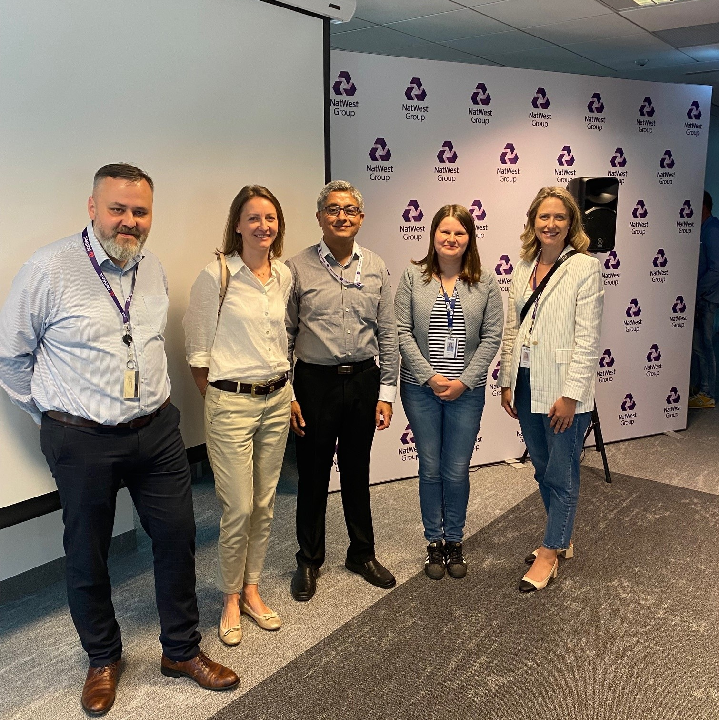
A Deep Dive into Payment Technologies
The payments industry is experiencing a dynamic revolution. The advent of cutting-edge technologies has significantly reshaped the landscape of transaction services over the past decade. This exciting transformation has improved individual and enterprise customers’ life offering a suite of flexible cashless services that make transactions faster, smoother, and more convenient than ever before.
From digital wallets like Apple Pay, Google Wallet, Pay Pal and real-time payments to mobile banking and contactless technologies like Near field communication (NFC) and Quick response (QR) codes, the financial landscape is now full of possibilities. The world of banking might seem like a complex mechanism of numbers and regulations, but beneath the surface lies a sophisticated and structured technological stack ecosystem. Let's take a closer look at the key technical components behind everyday banking interactions.
Front End: the user-friendly facade
Customers directly interact with Banks through web interfaces accessible on desktops, tablets, and smartphones. These are so called front-end technology. The most popular web technologies within the banking industry are: React, Angular or mobile development frameworks. React and Angular provide desktop applications front-end but with slightly different approach: Angular uses TypeScript programming language while React uses pure JavaScript programming language. In practice, both allow for structured, simpler coding which results in time saving. It shortens development, testing time and support error handling. It also standardizes coding which results in faster market web product release.
Mobile frameworks like NativeReact are used to develop mobile applications. Currently applications are developed for iOS and Android. This type of framework offers standardization of application and comes at a cost of performance and functionality. Natively built applications allow countering these drawbacks but there is a trade-off related to the development time to create two applications at lower level separately for iOS and Android systems.
The Back-End: The Engine Room
An important next tier is the back-end technology which handles the server-side and business logic that makes everything work but is not visible for a customer. The most common language among software engineers is Java which is a popular choice for stability and robustness within the banking industry. Banks also use Python or Node.js languages which are quicker to learn and to develop working solution but have higher overhead in runtime (execution time). They are commonly used in AI and data analysis.
Important key element of backend tech are databases which are the lifeblood of any banking system. They store all payment transactions and customer information. Databases go beyond just storing data. They are a powerful source of information that banks possess. Banks can analyse customer behaviour patterns and trends to develop new products and services, personalize offerings, and make data-driven decisions. Modern databases are designed to handle massive amounts of data. This allows banks to scale their operations smoothly, accommodating growth and increased transaction volumes. It also gives access to historical data using the sophisticated algorithms to identify a suspicious activity. In the financial industry, there are relational databases like MySQL, PostgreSQL, Oracle for the relational model of data and non-relational databases like MongoDB for cases when data kept is not structured into relational hierarchy.
Another critical element of the transactions is payment API gateway. This element serves as a connection point to integrate components of a payment processing system. It can accept traffic, authenticate, and authorise incoming requests, it might also play a role of a firewall and an anti-DDoS safety latch. It allows any internal system to connect with external parties like Pay Pal more safely.
A very important component in modern cloud technologies is the one responsible for communication between parts of a distributed system - API (Application Programming Interface). The most popular is REST API which exposes its functionalities, but also kafka, Akka and even message queues. Those components are used to communicate between parts of a deployed system, which in cloud model consists of multiple components working together. Software engineers leverage these components to ensure secure and efficient processing of the banking activities and the system latency does not impact the customer journey.
Fighting Fraud: Machine Learning and AI
Recent fraud incidents highlight the importance of robust fraud prevention tools. Banks are increasingly deploying cutting-edge Machine Learning (ML) and Artificial Intelligence (AI) algorithms to analyse transactions and customer behaviour patterns in real-time. This not only safeguards clients’ money but also frees up bank staff to focus on more complex tasks.
The Cloud Revolution: Embracing Scalability
Cloud is rapidly transforming the financial landscape. Cloud-based architectures offer significant cost savings for data storage, superior scalability for handling surges in transactions, much easier vertical and horizontal scaling of deployed systems. However, it requires redesign and rewriting of some components to be able to deploy them in the cloud. Several major cloud providers like Amazon Web Services (AWS); Google Cloud Platform or Microsoft Azure are shaping the future of banking technology.
Deployment models
Deployment model determines scalability, availability, and robustness of a deployed system. Cloud revolution introduced new opportunities in that regard but at some cost: an application must be designed and developed for cloud deployment and it’s usually not possible to deploy to large cloud monolithic application. Applications written from scratch might be designed and written accordingly to use forementioned advantages of cloud deployment.
There is a high number of technologies that can be used in the financial industry to propose large scale, reliable and secure payment systems. The system architecture always depends on the complexity of the required transaction product. The most important is to not overcomplicate the solutions and make sure there is always opportunity for additional scaling and development. The final payment stack, programming languages and frameworks should always depend on the business requirements. It is just a beginning of the exciting world of payments technology. As the industry evolves with new innovations, we may expect more advanced and efficient solutions and even more secure, convenient, and efficient ways to pay for things in the future.
Photo source: unsplash.com and own production
Authors: Iza Jagodzinska, Leszek Deska






